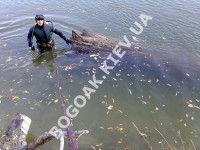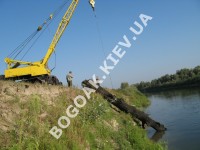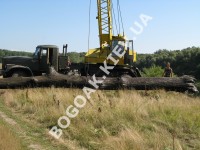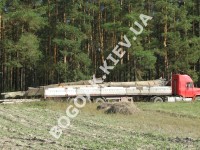For the last dozens of years, let alone hundreds and thousands of years, the river has changed its waterway, destroying a steep bank of the river (from 1-2 up to 30 metres a year), while sluicing the opposite one. Thus the river “wanders” within several kilometres. As the centuries go by, what we can see today, it returns to its old places. As a result it washes out the oak trunks it had washed over before. First, we see that the tree is washed out partially but over the years (sometimes it happens within a year) the tree is completely washed out and lies at the bottom of the river for some years. At this very period we lift it up. The main stages of this process are shown on the photo.
        |
And those bog oak trunks, which were not lift up in time, are washed over again as it happened thousand years ago.
The history says that a bog oak has been extracted at least for a thousand years and this process will continue for many thousands years more, but the stock of this valuable timber is limited. Part of the bog oak lies in the soil and is washed out by the river, the other part lies below the river-bed and, perhaps, it will be washed out in thousands of years, when the river returns to these places and the river-bed flows below the bog oak bedding.
As the old-timers say, the fishermen who lived next to a river in the past century stored up the bog oak to warm their dwellings. In those times, it was strictly forbidden to hew trees; however nobody was punished for mining the bog oak to burn it in the stove.
Unfortunately, a large amount of bog oak had been burnt in the stoves without getting the third chance to live.
Bog Oak video










